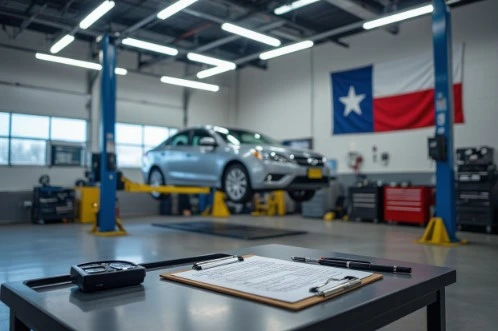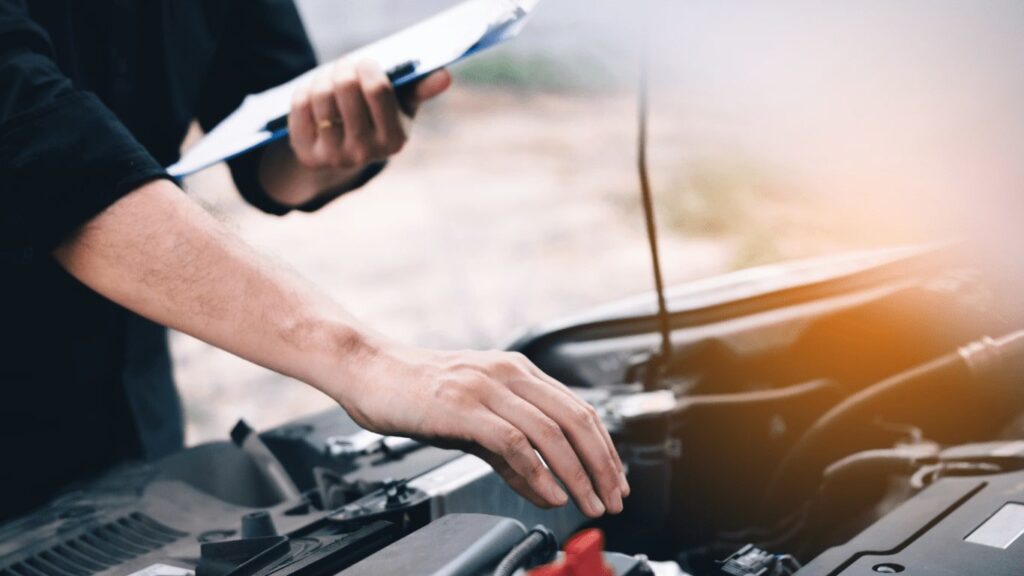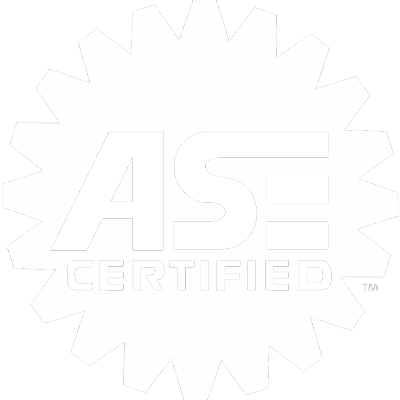Complete 2025 Texas Vehicle Inspection & Registration Guide
Just bring your vehicle to Aloha Auto Repair and you’ll get an authoritative, step-by-step Texas vehicle inspection that explains required checks, emissions and safety items, necessary documents, and how results affect your Texas vehicle registration and upcoming Texas vehicle inspection 2025 updates; our team helps you fix issues quickly so your vehicle meets state standards and you stay compliant.
Key Takeaways:
- Unique title: “Aloha Auto Repair’s Complete Guide to Texas Vehicle Inspection (2025 Edition)”
- This blog is for Aloha Auto Repair and targets the keyword: Texas vehicle inspection
- Overview content should explain Texas vehicle inspection requirements: what inspectors check (safety systems, lights, brakes, VIN), which vehicles and counties need emissions testing, and how inspections tie to registration renewal
- Practical value: describe how Aloha Auto Repair performs inspections, documents the inspection report, handles required repairs, and assists customers with Texas vehicle registration
- SEO & updates: include a section on Texas vehicle inspection 2025 to cover any rule or fee updates and link to official state resources for accuracy

Aloha Auto Repair — The Regulatory Landscape of Texas Vehicle Inspections
Key Laws and Regulations
You must have a valid safety inspection certificate within 90 days of vehicle registration or renewal; safety inspections cover items such as brakes, lights, tires, windshield condition, and seat belts. Emissions testing is mandated in designated counties, so you should check the DPS county list before scheduling. Licensed inspection stations electronically transmit results to the state’s database, and noncompliant vehicles can be cited during registration processing, so plan inspections ahead of your renewal date.
The Role of the Texas Department of Public Safety
DPS licenses inspection stations and certifies individual inspectors, sets testing protocols, and maintains the electronic inspection reporting system that links to registration records. You’ll find that inspectors must follow state-approved checklists and use certified equipment, and DPS performs audits to ensure stations are following protocol and accuracy standards.
DPS enforcement can include station audits, corrective action plans, fines, or license suspension when inspectors or stations violate program rules; you can file a complaint or request a review via the DPS online portal if you suspect an improper inspection. For practical purposes, you should retain inspection receipts and report discrepancies promptly, since DPS investigations often rely on documented inspection records and time-stamped electronic submissions.
Texas vehicle inspection requirements Texas vehicle inspection 2025 Texas vehicle registration
For upcoming changes labeled under “Texas vehicle inspection 2025,” you should monitor DPS and TxDMV updates; any regulatory shifts will affect your inspection timing, testing methods, or registration linkage. Check the official sites before scheduling to ensure your inspection meets current Texas vehicle inspection requirements and supports your Texas vehicle registration without delays.
The Inspection Process: What to Expect — Aloha Auto Repair
Texas vehicle inspection requirements Texas vehicle inspection 2025 Texas vehicle registration
Check your county’s specific rules since Texas vehicle inspection requirements vary by location and emissions status; you must have current Texas vehicle registration and proof of insurance for the inspector to complete the paperwork, and updates for Texas vehicle inspection 2025 may affect emissions testing in some metro areas.
Step-by-Step Guide to Vehicle Inspection
Expect the typical Texas vehicle inspection at Aloha Auto Repair to take about 20–30 minutes for a standard passenger car: you hand over registration and ID, inspector verifies VIN and paperwork, checks lights, tires (tread must be at least 2/32″), brakes, wipers, horn, mirrors and seat belts, and runs an OBD‑II/emissions test where required; you receive a pass or a rejection report listing failed items and next steps.
Inspection Steps vs. What You Should Do
| Arrival & paperwork | Bring current registration, insurance, and your key; expect a quick VIN and plate check. |
| Exterior & lighting | Inspector tests headlights, turn signals, brake lights; replace bulbs or lenses that are out. |
| Tires & brakes | Tread must be ≥2/32″; brakes checked for wear and performance—bring service history if recent work done. |
| Interior & safety | Seat belts, horn, mirrors, windshield condition (no major cracks in driver’s view). |
| Emissions/OBD‑II | OBD scan for check engine codes and readiness monitors in counties that require emissions testing. |
| Final paperwork | Pass sticker issued or a rejection report lists failed items and deadlines for reinspection. |
Common Issues Flagged During Inspections
Frequent failures you’ll see are nonworking bulbs, tire tread below 2/32″, worn brake pads or uneven braking, cracked windshields in the driver’s sightline, frayed or inoperative seat belts, and an illuminated check engine light or OBD‑II readiness failure that triggers an emissions rejection in affected counties.
Many customers at Aloha Auto Repair resolve the most common failures the same day: replacing bulbs and wipers takes minutes, tire replacement or brake service typically requires a few hours, and OBD‑II faults often need diagnostics to clear a persistent code or repair a sensor—costs can range widely by part and model, but we provide upfront estimates and can re‑test once fixes are completed so you can regain a passing Texas vehicle inspection quickly.
Understanding the Cost of Inspections — Aloha Auto Repair Guide
You should budget for a basic Texas vehicle inspection fee plus potential repairs: the standard safety inspection certificate is typically low-cost, while emissions testing in affected counties can add $15–$30. Average repair work to pass an inspection runs from $50 for minor fixes to $300+ for parts like catalytic converters or brake jobs. Aloha Auto Repair often gives a quick estimate up front so you know whether tightening a bolt or replacing a sensor will be required to complete your Texas vehicle inspection.
Breakdown of Fees and Additional Charges
State-authorized inspection fees cover the safety check, with emissions testing assessed only in 17 counties; visuals like stickers or documentation may add a small administrative charge. You may also face diagnostic time, emissions re-test fees, or parts/labor if your vehicle fails. Labor rates at private shops commonly range $80–$150 per hour, so minor adjustments stay inexpensive while more involved repairs increase total cost.
Inspection Fee Components
| Inspection certificate (safety) | Typically around $7 (varies by station and vehicle class) |
| Emissions testing (where required) | Often $15–$30 in affected counties |
| Re-test / admin fees | $0–$25 depending on station policy |
| Estimated repair costs | $50 for simple fixes; $200–$600 for parts like catalytic converters |
Cost Comparison: Private vs. State Inspection Stations
You’ll find private stations often charge similar base inspection fees but may add diagnostics or convenience services, while state-run or low-cost clinics sometimes limit repairs on-site. Private shops like Aloha Auto Repair commonly bundle diagnostics, minor repairs, and the inspection into one visit—saving you time but possibly adding labor charges. Shop around for transparent pricing if you want the lowest out-the-door cost for Texas vehicle inspection.
Private vs. State Station Snapshot
| Private stations (e.g., Aloha Auto Repair) | Flexible hours, on-site repairs, diagnostics included; labor adds to total |
| State-run / low-cost clinics | Lower sticker fees, limited repair services, may require separate visit for repairs |
Digging deeper, you can expect faster turnaround at private shops that diagnose and repair during the same visit; that convenience often justifies an extra $20–$60 in labor compared with a bare-bones state inspection. For fleet vehicles or if you need a cheapest-possible pass, a state clinic or emissions-only center may save money up-front, but factor in towing or multiple visits if repairs are needed.
Additional Cost Considerations
| Fast, single-visit pass | Private shops: higher hourly labor, fewer return trips |
| Lowest initial fee | State/clinic: lower inspection fee, potential extra trips for repairs |
Texas vehicle inspection requirements
You must present proof of insurance and current registration while your vehicle undergoes the safety (and emissions, if applicable) inspection; vehicles older than a certain model year or specialty types have different checklists enforced by DPS. Aloha Auto Repair can run through the specific items inspectors will check so you arrive prepared and reduce the chance of a fail.
Texas vehicle inspection 2025
Expect evolving rules and possible fee adjustments for Texas vehicle inspection 2025, particularly around emissions testing technology in urban counties; staying current with DPS announcements helps you avoid surprises. You can contact Aloha Auto Repair for updates and pre-inspection checks aligned with upcoming 2025 requirements.
Texas vehicle registration
Passing your inspection is required to renew Texas vehicle registration; DMV systems typically require the inspection record to be uploaded before you can complete online renewal. Bring your inspection certificate or have your inspector transmit the result electronically so your Texas vehicle registration proceeds without delay.
Texas Vehicle Inspection: Aloha Auto Repair’s Practical Guide
The Impact of Inspections on Vehicle Safety and Emissions
Assessing the Effectiveness of Inspection Programs
Texas safety inspections review roughly 20–30 components—brakes, lights, steering, suspension, tires, windshield, seat belts and VIN verification—and you benefit when those checks catch issues before they cause breakdowns. Inspection data often shows recurring failures like worn brake pads or lighting faults, which you can address quickly at a shop like Aloha Auto Repair to avoid roadside hazards and failed registration attempts.
Environmental Benefits: Reducing Emissions
Emissions testing in designated Texas counties uses OBD‑II scans and tailpipe checks to flag misfires, faulty sensors or degraded catalytic converters, so you can fix problems that drive up NOx, CO and VOC emissions. When you repair those faults, local air quality improves and your vehicle runs cleaner during ozone season in urban areas such as Houston and Dallas.
Deeper benefits show up when you follow through: an OBD‑II failure often points to issues that increase fuel burn and hydrocarbon output, while replacing a failing catalytic converter or repairing persistent misfires sharply lowers toxic tailpipe gases. State implementation plans tied to EPA standards rely on these inspections to reduce ground‑level ozone in metro areas; by addressing failed inspection items you directly help those regional air‑quality goals and often restore lost fuel efficiency and performance.
Texas vehicle inspection requirements
You must complete the required safety inspection annually and, if you live in an emissions county, the emissions test as defined by state rules; passing inspection provides the certificate needed to renew Texas vehicle registration without delay.
Texas vehicle inspection 2025
You should watch for updates to inspection procedures and covered counties in 2025—state agencies may revise testing scopes or technology requirements, so check official DPS or TDLR notices and consult Aloha Auto Repair if you’re unsure how changes affect your vehicle.
Texas vehicle registration
Inspection compliance ties directly to registration: you’ll upload or present your passing inspection ID when renewing, so staying current with inspections prevents blocked renewals and late‑fee headaches when you register your vehicle each year.
Common Misconceptions About Texas Vehicle Inspection — Aloha Auto Repair
Many assume Texas vehicle inspection is a one-time checkbox or only about emissions, but you face annual safety checks on lights, brakes, tires and VIN verification at licensed stations; failing an inspection can delay your Texas vehicle registration if defects aren’t corrected. At Aloha Auto Repair you can get a pre-inspection scan that identifies items that commonly cause failure, saving you time and the cost of last-minute repairs.
Debunking Myths Surrounding Inspections
Think inspections only catch major engine faults — they inspect tail lamps, turn signals, windshield condition, and brake performance too, so a cracked windshield or one dim headlight can mean failure. You can avoid surprises by bringing your vehicle to a certified inspector at Aloha Auto Repair for a quick 15–20 minute check; inspectors follow state-mandated criteria, not dealer preferences, and annual checks keep you compliant.
The Importance of Regular Maintenance Beyond Inspections
Relying solely on inspections leaves hidden wear unaddressed: oil changes every 5,000–7,500 miles, brake-pad checks at 30,000–70,000 miles, and tire rotations every 5,000–7,500 miles prevent failures that wouldn’t appear until a later inspection. You save money by fixing wear items early, and your vehicle is safer between inspection cycles.
Service records show preventive actions pay off: replacing a timing belt around 60,000–100,000 miles typically avoids catastrophic engine damage that can cost thousands, and catching a slow brake-fluid leak early prevents a late-term inspection failure that could sideline you for days. At Aloha Auto Repair you can enroll in reminder services and receive detailed estimates so you know which repairs affect inspection status and long-term reliability.
Texas vehicle inspection requirements
State rules require an annual safety inspection for most passenger vehicles, with additional emissions testing in metro counties. You can check official criteria online, but at Aloha Auto Repair we run the state checklist during every inspection so you know which items are covered and which repairs will be required to pass.
Texas vehicle inspection 2025
Regulations evolve, so watch for 2025 updates that could affect testing procedures or emission-area boundaries; you can avoid surprises by checking TxDMV announcements and letting Aloha Auto Repair handle any new compliance items before your next inspection.
Texas vehicle registration
Your inspection status ties directly to Texas vehicle registration: expired or failed inspections can block renewal. You can streamline renewals by having Aloha Auto Repair submit inspection results electronically once your vehicle passes, helping you complete registration without extra trips.
To Wrap Up — Aloha Auto Repair

The Texas Vehicle Inspection: A Comprehensive Guide
Texas vehicle inspection requirements Texas vehicle inspection 2025 Texas vehicle registration
With these considerations, you can keep your vehicle compliant with Texas vehicle inspection standards, prepare for Texas vehicle inspection 2025 updates, and avoid registration delays by performing timely maintenance and using trusted services like Aloha Auto Repair to guide you through Texas vehicle inspection requirements and Texas vehicle registration steps.
Aloha Auto Repair’s 2025 Guide to Texas Vehicle Inspection
Texas vehicle inspection requirements
A Texas vehicle inspection is a state-required safety (and in some counties, emissions) check that verifies key systems on your car meet minimum standards. Typical items inspected include lights, brakes, tires, windshield and wipers, horn, mirrors, steering and suspension, seat belts, exhaust system, and emissions equipment where applicable. Inspectors submit results electronically to the Texas Department of Motor Vehicles (TxDMV) so that passing an inspection allows you to renew registration. Certain vehicles (antique, off-highway, or specific agricultural vehicles) may have different rules, and inspection requirements can vary by county when emissions testing is in effect.
Texas vehicle inspection 2025
For 2025 the basic process remains the same: an authorized inspection station performs the check and sends the result to TxDMV. Some administrative details and county-level emissions procedures have continued to evolve, and many inspection stations now provide digital records and faster electronic reporting. If you plan to get your inspection this year, check for any county-specific emissions requirements and confirm acceptable documentation for registration renewals. Aloha Auto Repair can run the inspection, explain any issues found, and electronically file the passing report for you.
Texas vehicle registration
Your vehicle must have a passing Texas vehicle inspection before you can register or renew registration. After passing, the inspection report is transmitted to TxDMV and linked to your vehicle record; you can then renew online, by mail, or in person depending on your county’s options. Keep proof of a passed inspection for your records and bring required documents (proof of insurance, vehicle information) when registering. If repairs are needed after a failed inspection, reinspection procedures and fees depend on whether the same station performs the recheck and whether it is done within the allowed free reinspection period.
FAQ
Q: What exactly is a Texas vehicle inspection and who needs one?
A: A Texas vehicle inspection is a state-mandated safety inspection (plus emissions testing in certain counties) that verifies your vehicle’s major safety systems meet state standards. Most passenger vehicles registered in Texas must pass an annual inspection before registration renewal.
Q: What items are checked during a Texas vehicle inspection?
A: Inspectors examine safety systems such as brakes, brake lights, turn signals, headlights, tail lights, tires, windshield condition and wipers, mirrors, horn, seat belts, steering and suspension components, and the exhaust system.
Q: How often do I need a Texas vehicle inspection and when should I get it?
A: Inspections are required annually, and you should have an inspection completed before renewing your vehicle registration. It’s best to schedule the inspection a few weeks before your registration expires to allow time for any required repairs and possible reinspection.
Q: What happens if my vehicle fails the Texas vehicle inspection?
A: If a vehicle fails, the inspection station will provide a list of failed items. You must repair the problems and have a reinspection. Many stations (including Aloha Auto Repair) offer a free or reduced-price reinspection within a specified timeframe if you return after completing repairs.
Q: Are there any changes for Texas vehicle inspection in 2025 I should know about?
A: In 2025 the core inspection process is the same—authorized stations inspect safety items and, where applicable, emissions systems, and then transmit results electronically to TxDMV. Local emissions procedures and administrative details continue to be updated in some counties, and more stations are using digital records and electronic reporting.
Stay road-ready and compliant with the latest Texas vehicle inspection requirements for 2025. Learn what’s checked, how to prepare, and ensure a smooth registration process. Don’t risk delays—get your inspection done on time and drive with confidence.






